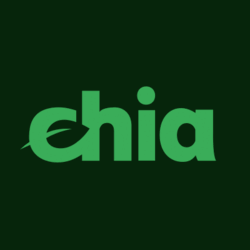Terra Classic (LUNC) offers a blockchain platform for stablecoins and decentralized applications. More
| Fully Diluted Valuation | $364.21M |
|---|---|
| 24H Trading Volume | $9.34M |
| 24H Low / High | $0.00005375000000000001 / $ 0.00005617000000000001 |
| Circulating Supply | 5,510.98B |
| Total Supply | 6,486.78B |
| Max Supply | ∞ |
| Categories | Smart Contract Platform 6 more |
|---|---|
| Founder | Daniel Shin and Do Kwon |
| Website | terra.money Whitepaper |
| Socials | 2 more |
| Explorer | Luncscan 4 more |
| Name | Pair | OG Score |
|---|
Terra Classic (LUNC): A Reborn Blockchain with Evolving Identity
Terra Classic (LUNC), formerly known as Terra (LUNA), is a decentralized, open-source blockchain focused on facilitating stablecoins pegged to real-world currencies. Established in January 2018 by Daniel Shin and Do Kwon, it aimed to bridge the gap between traditional finance and crypto by offering price-stable global payments. The original Terra Foundation, now dissolved, provided initial funding and support.
Following the dramatic algorithmic stablecoin depeg event in May 2022, the Terra ecosystem underwent a hard fork, resulting in the creation of Terra 2.0 (LUNA) and the rebranding of the original chain as Terra Classic (LUNC). This article explores the objective characteristics and functionalities of LUNC, avoiding promotional or investment-related language.
Key Features of LUNC:
Stablecoin Support: LUNC primarily serves as the foundation for stablecoins like TerraClassicUSD (USTC), aiming to maintain their peg through a dynamic supply adjustment mechanism.
Proof of Stake Consensus: The network leverages the Proof of Stake (PoS) consensus mechanism, encouraging user participation and securing the blockchain against malicious actors.
Staking and Governance: LUNC token holders can participate in network governance and earn rewards by staking their tokens, contributing to the overall health and security of the ecosystem.
Open-Source Development: Built on the Cosmos SDK and Tendermint consensus protocol, LUNC benefits from an open-source development environment, fostering innovation and collaboration.
Community-Driven Future: The project operates with a decentralized governance structure, relying on its global community of developers, users, and enthusiasts to shape its future direction.
Differentiation from Terra 2.0:
While both blockchains share some common roots, they also exhibit distinct characteristics:
Focus: LUNC primarily focuses on supporting stablecoins, while Terra 2.0 aims to be a platform for developing web3 applications and DeFi protocols.
Tokenomics: LUNC retains its original tokenomics, whereas Terra 2.0 introduced a new token (LUNA) and revised distribution mechanisms.
Community: Both blockchains have active communities, but their composition and goals may differ.
Current Status and Future Outlook:
Terra Classic continues to operate and evolve, facing challenges related to rebuilding trust after the 2022 crash. Its future success depends on various factors, including the effectiveness of its stablecoin mechanism, its ability to attract developers and users, and the broader crypto market climate.
Terra Classic stands out as a reborn blockchain emphasizing stablecoins for price-stable global payments, unlike many volatile cryptocurrencies. Its dynamic supply adjustment mechanism maintains stablecoin pegs and fosters trust.
Initially established in 2018 by Daniel Shin and Do Kwon, Terra Classic currently operates with a decentralized governance structure, empowering its global community.
Terra Classic operates without centralized backing, relying on its global community of developers and users for funding and development efforts.
You can buy Terra Luna Classic (LUNC) on Binance, MEXC, BitgetGate.ioBybit cryptocurrency exchanges.
This website uses cookies to enhance your experience. Please see our Cookie Policy.




